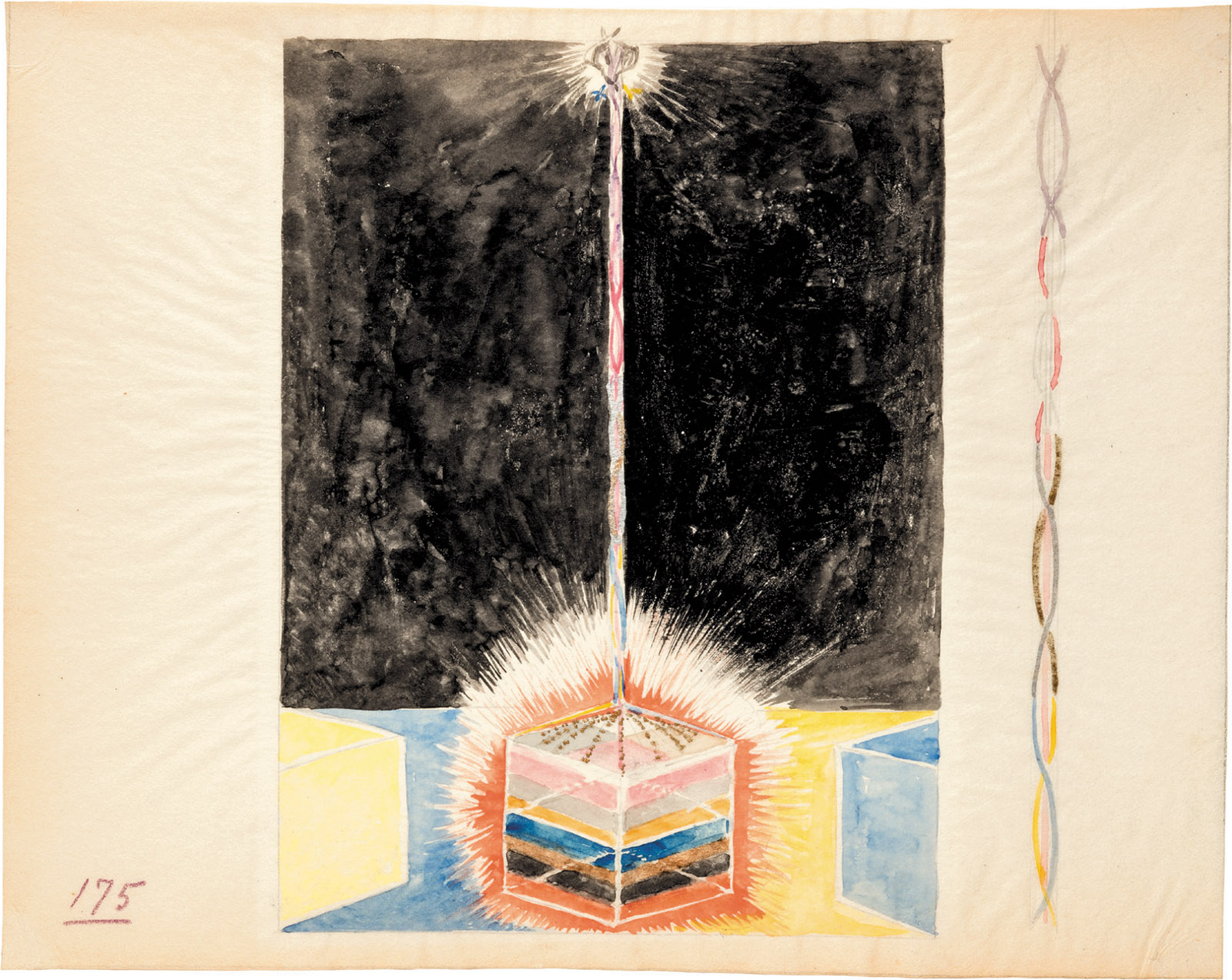Painting the Beyond by Susan Tallman
Moderna Museet, Stockholm - A notebook page showing a watercolor version of one of Hilma af Klint’s Paintings for the Temple, circa 1914–1915; from Christine Burgin’s Hilma af Klint: Notes and Methods
Born in 1862 to a prominent Swedish family (her great-grandfather had been ennobled for services as a naval officer), Hilma af Klint was a skilled painter of portraits and landscapes who in the first decades of the twentieth century began making hundreds of strange pictures articulating the fluid relations between spirit and matter. Many have no basis in the visible world, and their early dates—in some cases years before such benchmark abstract paintings
Af Klint was one of many artists (including Kandinsky and Malevich) drawn to the esoteric philosophies that flourished in the late nineteenth and early twentieth centuries—Spiritualism, Theosophy, Anthroposophy, and the like. But af Klint’s engagement went deeper than most, and she was tenacious in her pursuit of personal spiritual contact. Her greatest work, the series of 193 Paintings for the Temple, was made by channeling spirit-masters who she claimed moved her hand and planted images in her mind. She spent the rest of her life mulling over what they gave her.
When af Klint died in 1944, she left more than 1,200 paintings, 134 notebooks and sketchbooks, and more than 26,000 manuscript pages to her nephew, a vice-admiral in the Swedish navy. She also gave instructions that her work not be shown for twenty years after her death. She was lucky in her relations: the family not only adhered to the moratorium, they established a foundation to ensure that the paintings and documentation stayed together.

